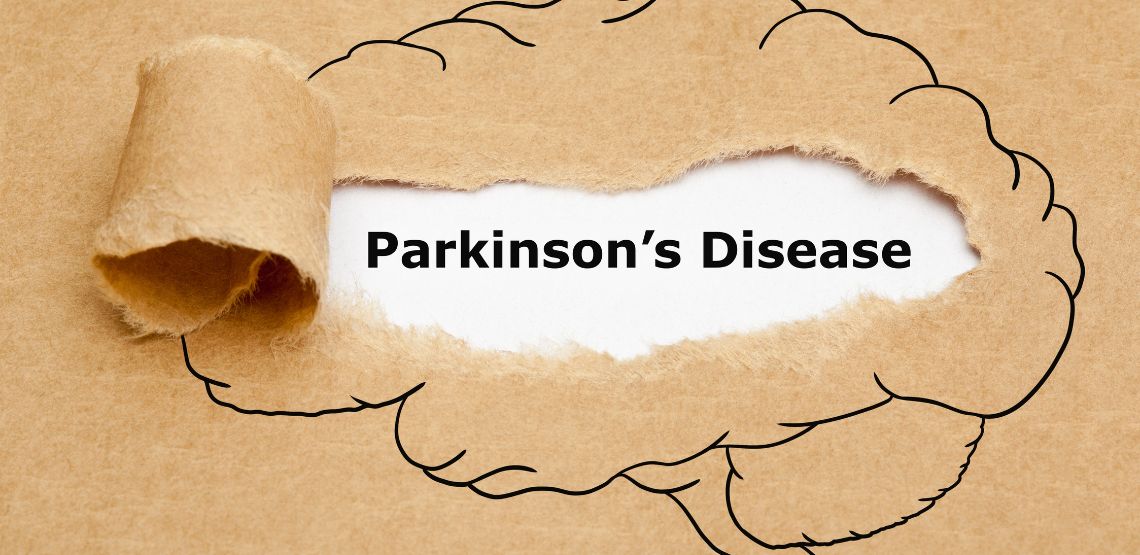How to Prevent Parkinson's Disease
Aging is the biggest risk factor for Parkinson’s disease, but there are ways to help reduce its progression. Parkinson's disease is the second most common disorder as a result of the degeneration of brain cells. The condition affects around 1 million Americans and worldwide about 1 in 600 people over the age of 65 suffer from Parkinson’s. In this article, we look at how to prevent Parkinson’s disease. We also look at the disease progression and its risk factors.
The condition was initially described around two centuries ago, but researchers are still trying to unravel exactly what causes the changes in the brain. There is still no treatment to cure or stop the progression of the disease. However, as for other chronic conditions associated with aging, it is becoming clear that healthy habits slow down the aging process and prevent or delay the onset of Parkinson’s disease.
What is Parkinson’s Disease?
Dopamine is an important brain chemical that is responsible for transmitting signals between nerve cells, both in the brain and in the rest of the body. In Parkinson’s disease, the brain cells that produce dopamine gradually die and the symptoms become progressively worse as dopamine levels decrease.
Dopamine is involved in controlling conscious body movement, mood, memory and thinking. Changes in movement are the most obvious symptoms of Parkinson’s and include:
- Tremors, first in the fingers or thumbs and then later in the hands.
- Slower movement.
- Stiffness in the body that does not improve as the person moves around.
- Stooping or slouching posture.
- Increase in sudden movements while asleep.
- A mask-like, emotionless, facial expression.
- Arms that do not swing normally when walking.
- Softer, possibly hoarse, speech.
- Changes in handwriting (typically it becomes smaller and less clear).
Symptoms of Parkinson’s that are not related to movement include changes in thinking, including a shorter attention span, memory loss and unclear speech. Those affected might also experience mood and sleep disorders. Other physical symptoms include constipation, fatigue, dizziness and loss of taste or smell.
The actual symptoms, and how rapidly they become worse, vary between those with Parkinson’s. The first three symptoms listed above are the most typical of the condition and doctors look out for at least two of them before confirming a diagnosis of Parkinson’s.
Initially, however, symptoms of the disorder may be hardly noticeable and the non-movement symptoms usually set in before the changes in movement become evident. This means the brain changes are fairly advanced by the time Parkinson’s is diagnosed.
What Causes Parkinson’s Disease?
There is as yet no treatment to prevent or halt the gradual dying of the brain cells that produce dopamine. The main reason is that, despite decades of research, it is still unclear exactly why and how this happens.
Abnormal Biochemical Process
It now appears probable the damage to brain cells is the result of faulty biochemical processes. For example, many studies are now focused on alpha-synuclein, a protein involved in regulating the flow of dopamine. In people with Parkinson’s, there is an overproduction of this protein, some of it in a mutated form, and scientists believe that this might be toxic to brain cells.
Genetic and Environmental Factors
In the meantime, experts do know that a combination of genetic, environmental and lifestyle factors contribute to the risk of developing Parkinson’s disease.
About 10% to 15% of cases can be linked directly to hereditary factors. Furthermore, research has shown that small variations in one or more of about 20 genes might increase the risk of Parkinson’s. But not all people who have these gene variations develop the disease and that is where environmental and lifestyle factors come in.
Exposure to certain pesticides and herbicides is one such risk factor. These chemicals have been found in the brains of some Parkinson’s sufferers and the incidence of the condition is higher in agricultural workers than among the general population. Previous brain trauma is another risk factor.
Related Search Topics (Ads)
Aging
Aging, with the known deterioration in normal cellular function throughout the body, is the most significant risk factor for developing Parkinson’s. As with most other chronic conditions, healthy lifestyle choices appear to also have a protective role in Parkinson’s disease. Healthy habits reduce the inflammation that contributes to cell damage and also help to maintain the optimal functioning of the whole body.
Parkinson's Progression
The progression of Parkinson's disease varies from person to person, but it typically follows a pattern of gradual worsening of symptoms over time. In the early stages, symptoms may be mild and may only affect one side of the body. As the disease progresses, symptoms become more severe and may begin to affect both sides of the body. People with Parkinson's disease may also experience non-motor symptoms such as depression, anxiety and sleep disturbances, which can also worsen over time.
Preventing or Slowing Parkinson’s Progression
Exercise
Thus far, physical activity throughout life is the one lifestyle factor with the strongest research support for reducing the risk of Parkinson’s disease.
Aerobic exercise benefits brain health at a cellular level. It gets the heart beating faster, so that more oxygen is supplied to the brain – this reduces inflammation and also improves cognitive function.
Studies that follow large groups of people over many years have found that there is a lower incidence of Parkinson’s in those who reported moderate to high levels of physical activity in midlife. Persons who exercised regularly and did develop the condition experienced slower progression of symptoms.
Furthermore, studies of people with Parkinson’s disease have shown that regular exercise could slow down progression and improve quality of life. It is self-evident that building up endurance, muscle strength and balance in the early stages of Parkinson’s will provide a reserve of physical function as the disease progresses.
Diet
The following are dietary guidelines, backed by some research, which may help to prevent Parkinson’s or slow down disease progression:
- Eat organically grown foods. Not only are they more nutritious but there is also reduced exposure to pesticides.
- Eat more vegetables. It appears that a higher intake of folic acid, one of the B vitamins, may reduce the risk of Parkinson’s. This vitamin is found mainly in vegetables, especially green leafy vegetables.
- Make sure that you maintain adequate levels of vitamin D. Researchers found that about 70% of persons with early-stage Parkinson’s have low levels of this vitamin. Certain foods, especially oily fish, contain vitamin D but usually not enough. So be sure to expose your skin to sunlight for about 20 minutes a day.
- Omega-3 fatty acids also appear to have a protective effect against Parkinson’s. The anti-inflammatory effect of omega-3 helps to prevent cell degeneration and death.
- Many persons diagnosed with Parkinson’s were also found to have a deficiency of the enzyme CoQ10. This enzyme has been shown to prevent dopamine loss and slow the progression of the disease. You can either take CoQ10 supplements or eat more organic meats and wild-caught fish.
Excessive Caffeine Consumption Can Cause Complications
Excessive caffeine consumption may have implications for people with Parkinson's disease, and it is generally advised to be cautious with caffeine intake. Here are a few considerations:
- Motor symptoms: Parkinson's disease is characterized by motor symptoms such as tremors, rigidity, and bradykinesia (slowness of movement). Excessive caffeine intake may worsen these symptoms and interfere with motor control.
- Sleep disturbances: Many people with Parkinson's disease experience sleep disturbances. Caffeine, being a stimulant, can further disrupt sleep patterns and worsen sleep problems, which may already be a challenge for individuals with Parkinson's.
- Medication interactions: Parkinson's medications, such as levodopa, may interact with caffeine. Caffeine can potentially interfere with the absorption and effectiveness of these medications, impacting symptom management.
Stress Reduction
Experts are currently theorizing that prolonged emotional stress might trigger Parkinson’s disease. It is known that continuous high levels of adrenalin and cortisol, and the inflammation it causes, damage brain cells.
More than 100 years ago, a doctor observed that prolonged anxiety and emotional shock often preceded the onset of Parkinson’s. Furthermore, studies have found that there is a higher incidence of the condition in people who suffered extreme psychological stress, for example, victims of the holocaust and ex-prisoners of war.
So, exercise, mindfulness, meditation and other activities that relieve stress can also prevent or delay the onset of Parkinson’s disease in susceptible individuals.
5 Uncommon Signs of Parkinson's Disease
Here are five uncommon signs of Parkinson's disease that may not be widely known:
- Micrographia: This term refers to the progressive shrinking of handwriting over time. People with Parkinson's disease may experience a decrease in the size of their handwriting, making it progressively smaller and more difficult to read.
- Sleep disturbances: Parkinson's disease can disrupt normal sleep patterns, leading to various sleep disturbances. These can include vivid dreams, acting out dreams physically (known as REM sleep behavior disorder), excessive daytime sleepiness, restless legs syndrome and sleep apnea.
- Decreased sense of smell (hyposmia): A reduced ability to smell or detect odors, known as hyposmia, can be an early sign of Parkinson's disease. Some individuals may even experience a complete loss of smell (anosmia), which can precede other symptoms by several years.
- Voice and speech changes: Parkinson's disease can affect the muscles involved in speech production, leading to changes in voice quality. Individuals may notice a softer, more monotone voice, slurred speech or a hoarse or breathy voice. They may also experience difficulty with articulation and reduced facial expression while speaking.
- Orthostatic hypotension: This condition refers to a sudden drop in blood pressure upon standing up, leading to dizziness, lightheadedness or even fainting. Some people with Parkinson's disease may experience orthostatic hypotension, which can contribute to balance issues and increase the risk of falls.
Comfort Medical vs. Pure Wick
Comfort Medical and Pure Wick are both companies that provide medical solutions for individuals with Parkinson's disease who may require catheters. Catheters play a crucial role in managing the urinary symptoms often associated with Parkinson's disease, such as urinary urgency, frequency and incontinence. These symptoms can result from the impact of Parkinson's on the nervous system's control over bladder function. Both Comfort Medical and Pure Wick offer catheter products designed to help individuals manage these challenges, promoting a better quality of life by reducing discomfort, preventing infections and maintaining bladder function.
Take Control of Your Health
As more people live longer, the incidence of chronic conditions is increasing, including Parkinson’s disease.
However, as in the case of other chronic conditions, evidence is building that keeping your body and mind healthy might prevent or slow down the progression of Parkinson’s.
Exercise regularly, eat a healthy diet and manage your stress to maintain the best possible quality of life.

